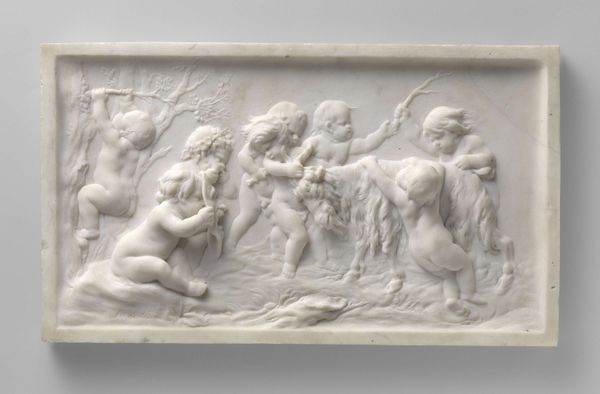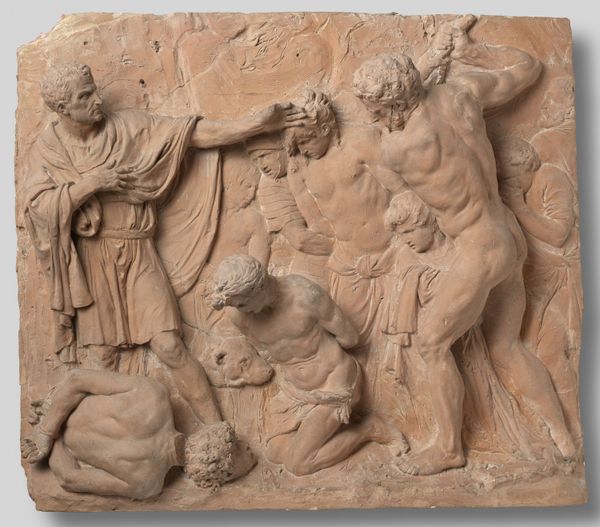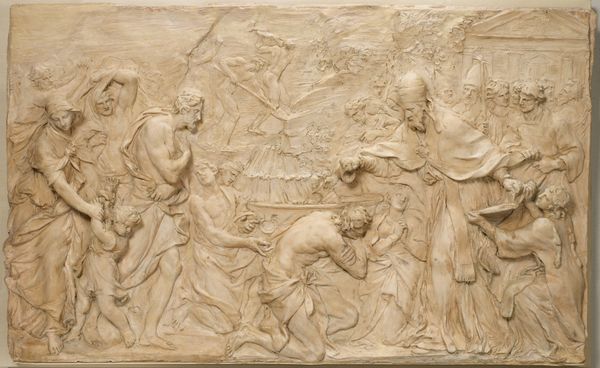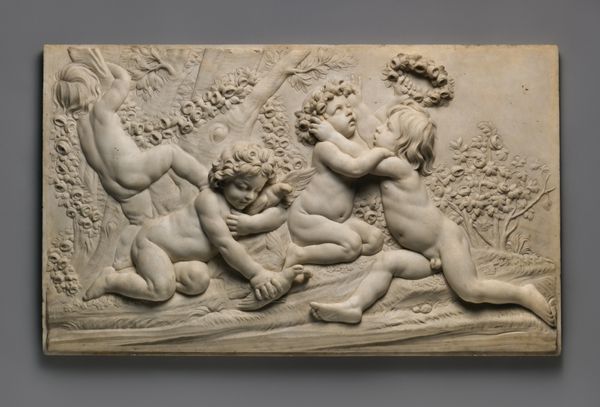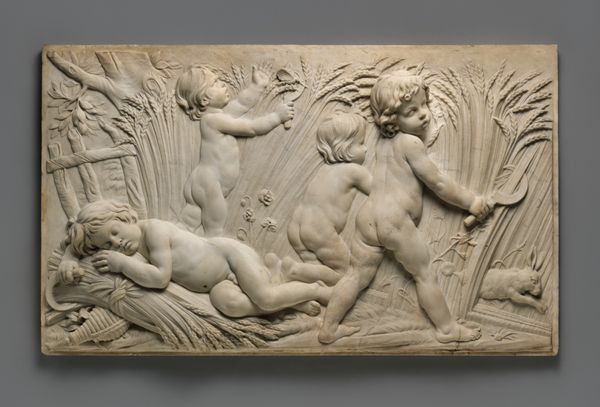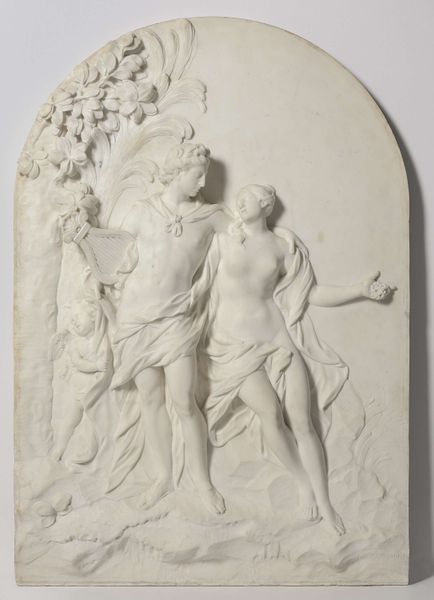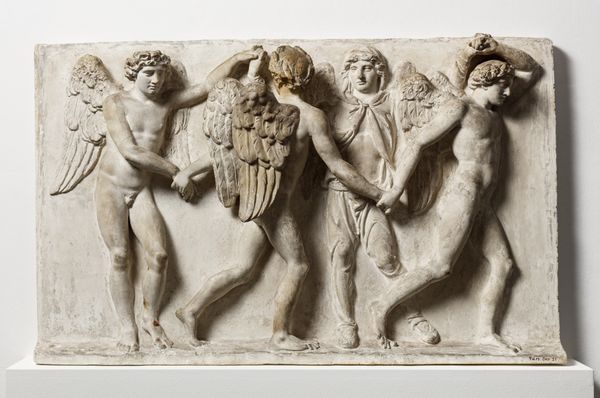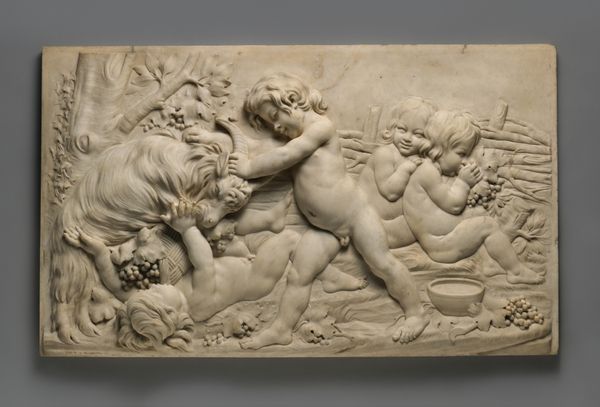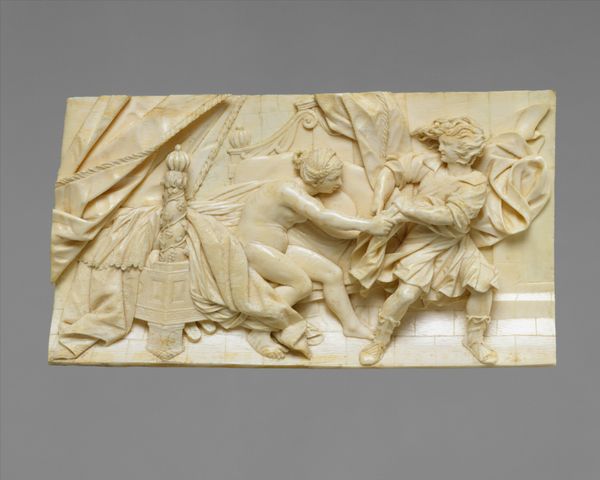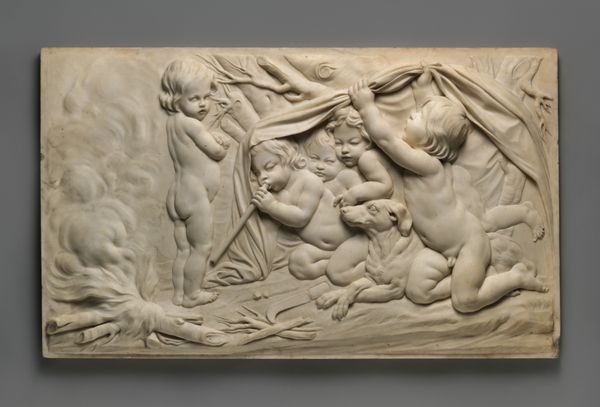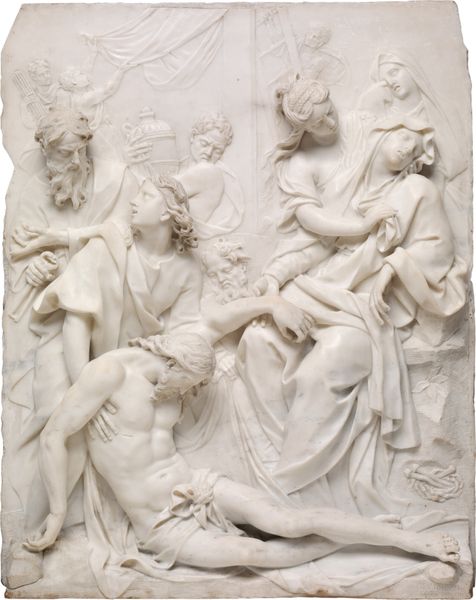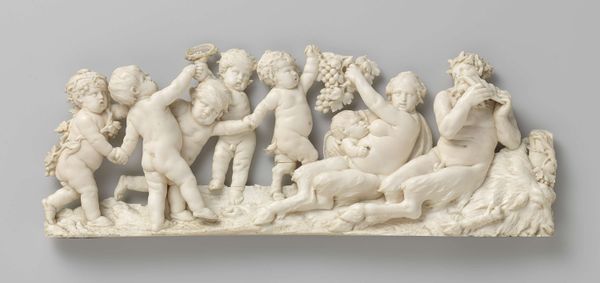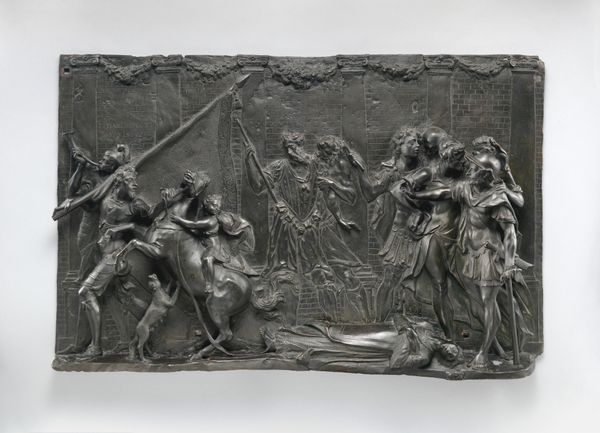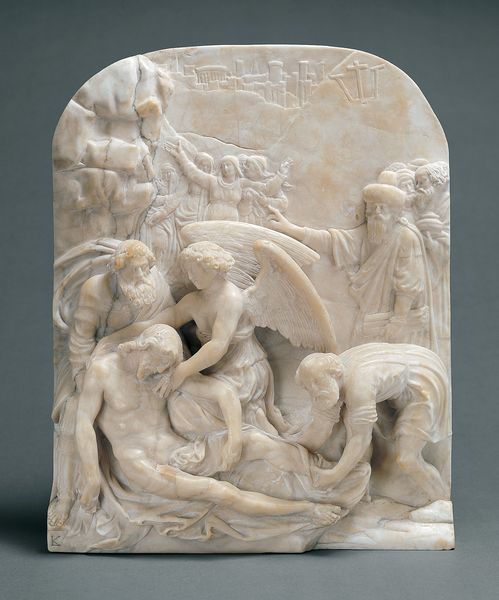
relief, sculpture, marble
#
allegory
#
baroque
#
sculpture
#
relief
#
figuration
#
sculpture
#
marble
Dimensions: 36.8 × 53.3 cm (14 1/2 × 21 in.)
Copyright: Public Domain
Curator: What strikes you first about this exuberant marble relief? I find it playfully chaotic. Editor: It’s pure hedonism rendered in stone, isn't it? This feels like a deliberate flaunting of restraint. Who is responsible for this Bacchanal tableau? Curator: The sculptor was Gerard van Obstal. He created "The Triumph of Silenus" around 1660. This allegorical work is now held here at the Art Institute of Chicago. Editor: Silenus, the elderly companion and tutor of Dionysus. So here we see the god of wine’s story expanded, mythologized… I’m curious about this presentation of inebriation, particularly its cultural symbolism at the time. Curator: Intoxication has always held a potent dual meaning. Spiritual ecstasy and social abandon. Van Obstal renders that tension so clearly—the physical strain visible on the figures, the complete lack of inhibition. Editor: And yet, there’s a very polished, performative aspect. This isn’t just a drunken revel; it’s a sculpted narrative of one. I wonder how contemporary audiences perceived it. Was it cautionary, or celebratory? Curator: I think both, and perhaps neither. Consider the long tradition of Silenus as a symbol—wisdom beneath a grotesque exterior. These symbols offer enduring and multi-layered truths that can persist through time. Editor: It’s a narrative that resonates, the blurring of boundaries through altered states, the questioning of social mores… the Bacchanal, even in this carved, sanitized form, speaks to that ongoing tension. Curator: Absolutely, we project our current values, anxieties, and desires onto these classical forms. Editor: And in turn, the sculpture reflects back something about ourselves, right now. Curator: It’s why these allegories continue to compel us centuries later. It really shows a collective, universal narrative of humanity reflected through art. Editor: Thank you, indeed something for our current political and social state to keep in mind!
Comments
No comments
Be the first to comment and join the conversation on the ultimate creative platform.
